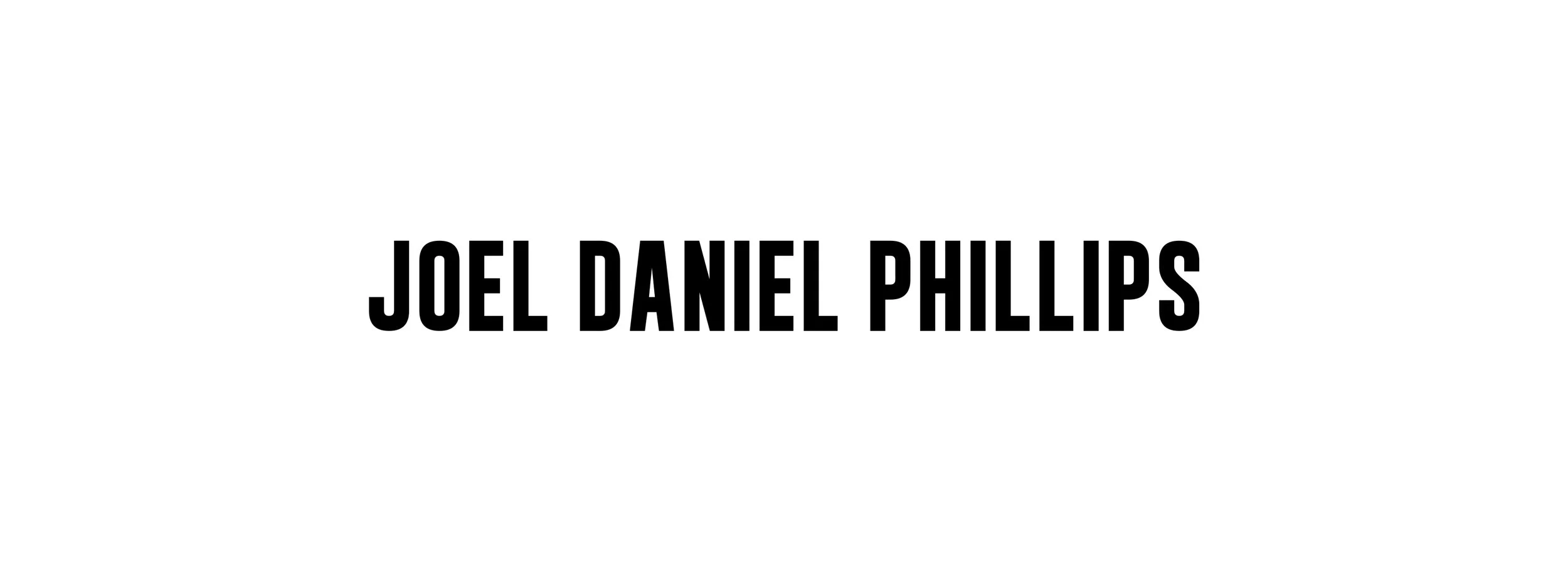There are times when you come across designers that add their own artistic viewpoint to an existing subject or medium. Then, there are times when you come across an artist that has not only created their own distinct style but also has the creative ingenuity that very few artists have. This perfectly describes the artist, Joel Daniel Phillips. Known for his monumental portraiture, Joel's work tries to focus on the significance of narrative in human existence. You can visit his website and Facebook Page for more of his work.
In an exclusive interview with Interiors, we talked to Joel Daniel Phillips about his art and his inspirations.
INT: When did you first realize you wanted to do Art?
JDP: I first realized that I wanted to make art my freshman year of college when I took a printmaking class out of the blue. At the time it seemed next to impossible to make a living as an artist and I opted for the ‘more practical’ route - deciding to study graphic design as an alternative. I realized as I was graduating however, that while I enjoyed design, the creative process was limited by the fact that at the end of the day someone else always had the final say. The financial security of a steady paycheck was alluring, but I was constantly frustrated by the feeling that whatever I was creating was not quite what I personally wanted it to be. I realized very suddenly that while it scared me shitless, I was being pulled inexorably toward a career as a fine artist instead.
After graduating I spent a few years working as a designer by day and making fine art at night and on the weekends, always aiming toward the moment when I could quit my design job and do my own work for a living. That day came almost exactly two years ago, and I haven’t looked back since.
INT: Favorite Art Piece/Project that you've done and why?
JDP: That’s a bit like asking a parent who their favorite child is. My ‘favorite’ piece changes constantly, depending on what is currently on the drawing board. I tend to fall in love with most new pieces as they are being made.
Overall though, I think my current favorite piece is Eugene #4. I don’t normally draw seated figures, and Eugene’s position was fascinating. I particularly enjoyed the way the light came almost straight across from his right, painting the edge of his face and body. There was something deeply compelling about his expression in the image as well, a striking balance between questioning and accepting.
INT: Favorite Movie and why?
JDP: At the moment I’d have to say Birdman. I don’t think I’ve ever seen a more nuanced or complete understanding of the narcissism and tension behind the creative psyche. Michael Keaton’s character is inexorably driven by his need to be recognized by others as being as important of a figure as he sees himself to be. I think that most artists or creatives of any medium have this innate hubris and ambition as part of their drive to succeed, and Keaton’s portrayal of the tensions, impossibilities and nuances involved was deeply powerful.
INT: You describe life in a circular manner, where experiences are formed and defined by others. Similarly, your work always seems to tell a story and I'm curious if you've thought about experimenting with film at all? Does cinema have any type of influence in your work?
JDP: Honestly I haven’t really thought about that much. I know just enough about film and the processes behind it to realize how much of a technical skill set is involved, and that the moment I’m content continuing to learn how to draw.
INT: Where do you see your art going? Do you have any goals in terms of work you'd like to do and projects you'd like to try?
JDP: Hmm, I always have a million and one projects I want to work on, but I generally try and keep things under wraps until I start making the actual work. A new body of drawings that I’m quite excited about however, is in conjunction with my residency this summer at the Palo Alto Art Center.
Over the past two years there has been an ongoing legal battle in Palo Alto about whether the owner of Buena Vista Mobile Home Park (located in smack in the middle of the city) is allowed to evict the longstanding residents of the park and sell the property. The park is home to around 400 residents, many of whom have lived there for many years, and is some of the last truly affordable housing in Palo Alto. If evicted, most of the residents will have no choice but to leave the city. For the residency I have begun visiting the park and shooting photo references of the residents and their wonderfully varied abodes, and will be creating a body of work that I hope will explore the connection between the residents and their homes, as well as the myriad of social and economic questions that have arisen around the issue of their eviction.


